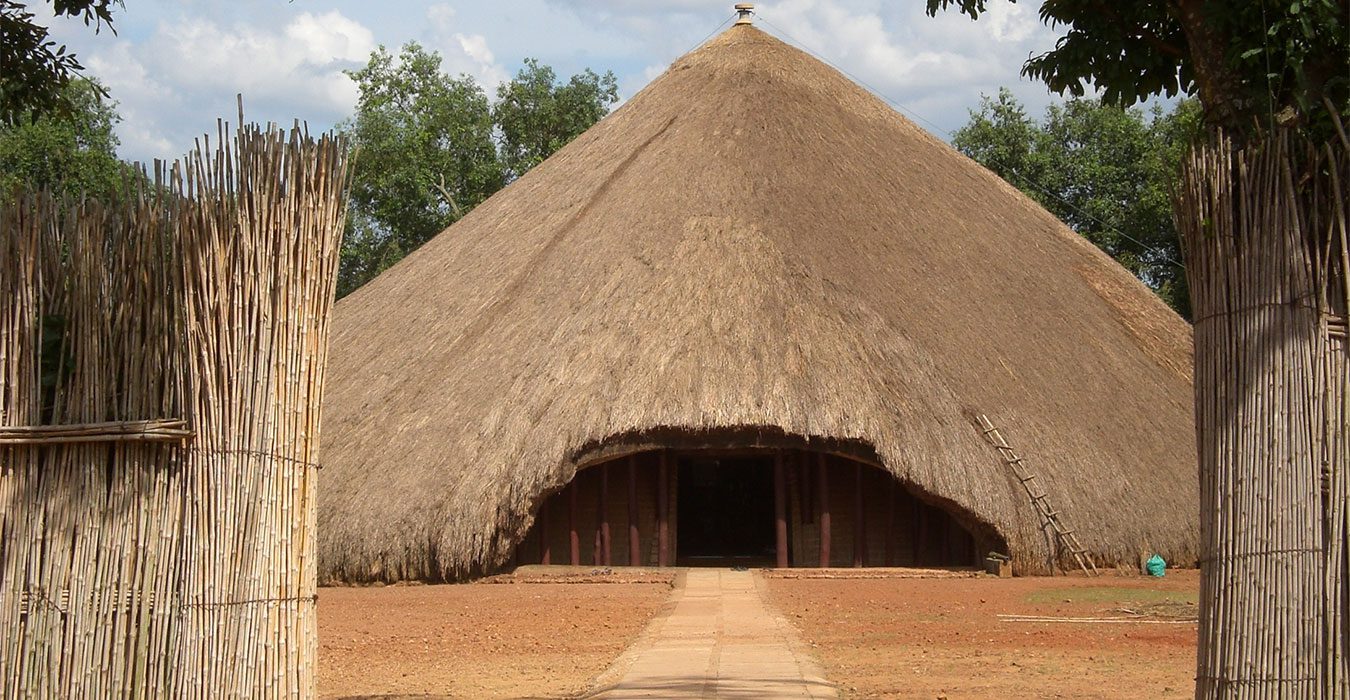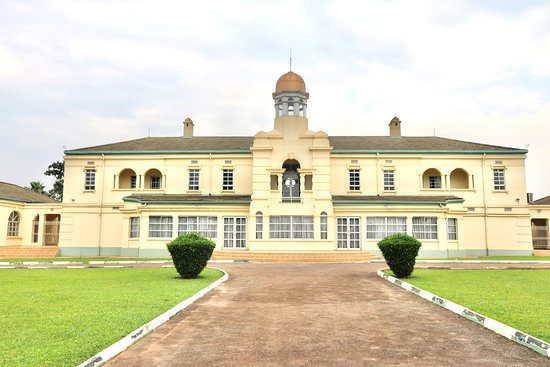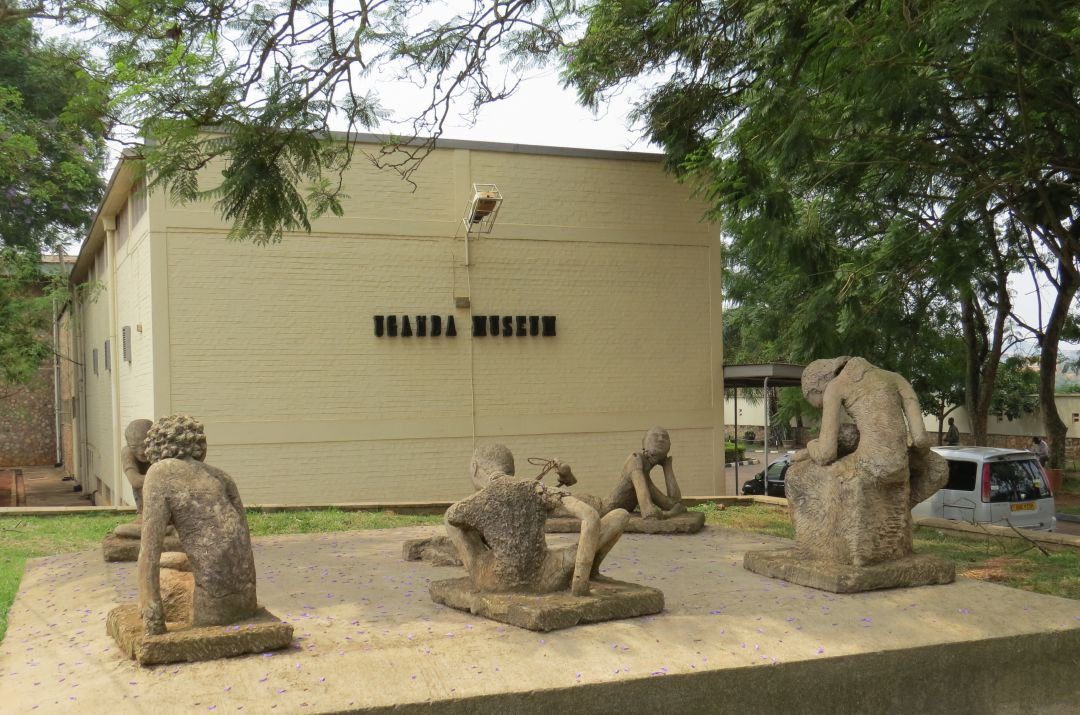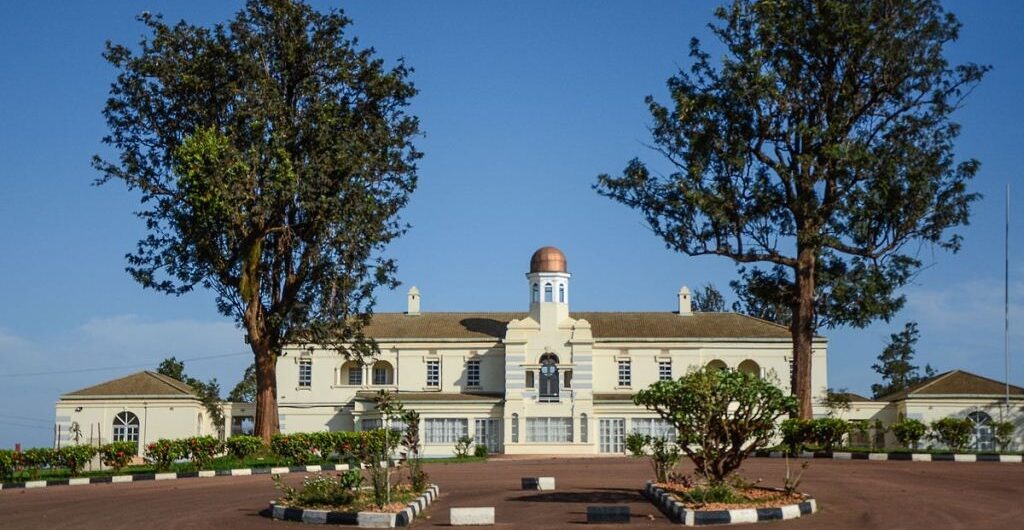Cultural Tours in Uganda are not as popular as visiting mountain gorillas and game drives. This shouldn’t be the case because Uganda has so much to offer beyond wildlife. There are reasons why Uganda is referred to as the Pearl of Africa. Ugandans are one of the friendliest people on earth. They are accepting and easily get along with foreigners. One of the reasons for this is that the country’s ethnic groups have learnt to live in harmony with each other. This has made it easy for Ugandans to accept foreigners without any suspicions whatsoever. Uganda is a nation with a rich cultural tourism sites. The numerous tribal groups and cultural landmarks throughout the nation provide as evidence for this.
Cultural Tourism Sites In Uganda
The Acholi, Alur, Bafumbira, Baganda, Bagishu, Bagwere, Bakiga, Bamba, Banyoro, Banyuli, Bateso, Batooro, Batwa, Jonam, Karamajong, Kumam, Langi, Lugbra, Madi, Jopadhola, and Tepeth are just a few of the 65 groups of people that make up Uganda. Every group has a distinct language, cultural norms, and rituals. Most of them are ruled by a traditional king or chief. These Kingdoms and Chiefdoms once possessed such sway and authority that the presidents of Uganda decided to eliminate them. It 30 years ago, the president brought them back to life. Visitors get the chance to experience these indigenous groups’ cultures by visiting a family or seeing their cultural acts while on a cultural tour.
The Batwa path in Mgahinga National Park and seeing the Ik and Karamojong people in northern Uganda are the most well-liked cultural experiences in Uganda. Visits to the Batwa pygmies, who were driven out of Mgahinga National Park to make place for the critically endangered mountain gorillas, are part of the Batwa route. Due of its lengthier nature, the Batwa Trail in Mgahinga differs from the Batwa visit in Bwindi. You have the opportunity to follow the Batwa themselves into the forest. You can discover more about their prehistoric hunting techniques and comprehend why it has been so challenging for them to adapt to life outside of the forest while you are with them.
Ik people are also fascinating. Less than 10,000 people make up one of Uganda’s smallest ethnic groups. The Ik people, who originally resided in Kidepo Valley National Park, were likewise uprooted after the park’s establishment. Once they are 3 or 4, kids shouldn’t live with their parents in the same home, according to the Ik. They are sent to live in a different home with people their own age. Once they arrive, their parents no longer provide any care for them. Interesting cultural customs are also practiced by their neighbors, the Karamojong. The Karamojong firstly keep their children as long as they can. Second, they live a similar lifestyle to the Masai as nomadic pastoralists. The Karamojong rely nearly exclusively on their cows. You can participate in their traditional dances, milk a few of their cows, go grazing with the men, or purchase some of their regional artwork while you’re there. Visits to the IK or Karamojong are highly advised if you’re looking for genuine indigenous African groups of people who have not fully adopted modern customs or culture.
Another fascinating civilization is Bagisu culture. This group of people, which can be located in Eastern Uganda, is well-known for its lengthy history of circumcision rites and “Kadodi” dances. In the Bagisu, when a young man reaches the appropriate age, he gets circumcised in public, without anesthetic, to mark his entry into manhood. Hospital circumcisions are not acknowledged or accepted and are viewed as cowardly. The young guy must visit each of his relatives for about a week before the circumcision ceremony in order to receive their blessings. He is escorted by friends and family members during these dancing and celebratory moves to his relatives. Visitors can either go directly to the circumcision ground and witness as many young men get circumcised in front of everyone, or they can join in the “Kadodi” dance and briefly escort one of the young men. The Sabiny group of people uses a circumcision ritual that is more contentious. The Sabiny circumcises girls only once they reach adulthood. Women and other human rights organizations have denounced this practice, yet it continues in silence.
Beyond the 65 groups of people, Uganda is a nation rich in historical and cultural landmarks. To increase visitor numbers, the government has promoted these locations, but it has faced several obstacles. The fact that many sites are controlled by organizations or people with cultural backgrounds but who are unwilling to share management with the government presents one of the key difficulties. Without adequate mechanisms of accountability in place, the government is hesitant to devote significant money to modernizing many of the locations. Few have benefited from government and international agency financing, such as the Kasubi tombs in the capital and others in the bigger towns, but this is insufficient. The country’s lesser-known cultural monuments should be the main focus rather than a select few government museums or attractions in Kampala. This is crucial because the majority of the museums in the heart of Kampala have been overly modernized and lack a genuine link to Uganda’s past or its indigenous groups of people. You feel a true connection to the history of the particular group of people or ethnic group only when you visit isolated cultural sites. To draw more domestic and foreign tourists, these locations might be developed and promoted.
These cultural landmarks will be extremely important for anyone looking to trace their ancestry as the nation becomes more modernized and its people grow further removed from the way of life of their forefathers. or research previous methods of doing things. These places are being visited by an increasing number of foreign tourists each year, and as Uganda’s middle class and economy expand, this trend will continue. Ugandans will start spending more money to visit these locations.
By contributing to their rehabilitation or collaborating with the local cultural institutions and people who control these places, the Ugandan government should start actively conserving and preserving them. There are a lot of places, but we will just talk about the more well-known ones that you can visit during our one-day tour of Kampala. You might wish to look into Kampala’s tourist destinations if you are just interested in the capital’s attractions. Let’s keep talking about the cultural sites.
Uganda Cultural Destinations
Kasubi Tombs:

The tombs are a significant tourist destination in Uganda and one of the Kingdom of Buganda’s greatest treasures. In Kampala, the graves are located six kilometers from the city center. The tombs are a UNESCO World Heritage site that annually attracts thousands of visitors (or formerly did). The road to Rubaga and Mengo and Makerere University can be used to get there quickly. The primary resting place for Buganda’s Kings (Kabakas) and other royals is the Kasubi tombs. The graves contain the remains of four Buganda kings: Mutesa II, Mwanga II, Daudi Chwa, and Mutesa I. Recently, a fire started by unknown people destroyed a sizable portion of the graves. This led to a flurry of protests and demonstrations by supporters of Baganda. There are many unanswered questions because the perpetrators have never been found. With financing from the governments of Japan and Uganda, improvements have been made to restore it to its previous condition.
Kings Palace in Mengo and Parliament (Bulange):

One of the residences of the Kabaka (King) of Buganda is the Lubiri or Mengo palace. It is four square miles in size and boasts a stunning colonial architecture. Since the palace was constructed in 1885, it is a great destination to visit if you want to learn more about the Baganda people’s history. This palace was attacked by government soldiers during the reign of the present Kabaka’s father, Muteesa II, and he no longer resides there. During the workweek, visitors are welcome. The Bulange, or main parliament, of Buganda is located directly across from the palace. You can watch how the Buganda elders debate matters affecting the Kingdom by attending one of the parliamentary sessions.
The Uganda Museum:

The Uganda Museum was established to aid in the preservation of Uganda’s history. Without a doubt, the museum is the greatest place to go if you want to learn about Uganda’s history and cultural heritage. A variety of musical instruments, artifacts, and recordings serve as examples of this history and tradition. The Uganda Museum was initially constructed in 1908, although it has undergone a number of interior changes to give it a more contemporary appearance. There are numerous methods and resources available to explain or illustrate what Uganda was and is. They include musical instruments, traditional weapons (spears, arrows and bow), drums and archaeological remains to mention but a few.
The Kabaka’s Lake: On the outskirts of Kampala, at Mengo, you may find this lake close to the palace. Kabaka Mwanga II gave the order to build the lake in 1880 so that people would have a way to flee through Lake Victoria in the event of a civil war. The tranquil waters of the lake, which has a surface area of five acres, are home to lovely birds and other creatures. Kabaka Mwanga used to go swimming and fishing at the lake. Lake Victoria remains unconnected despite the Kabaka’s desire to have a channel built to it. Swim, sport fish, or simply unwind on the stunning shoreline are all options for visitors. There have been challenges maintaining the water level of the lake and curbing pollution from businesses operating nearby but it is still a place worth visiting.
Namirembe and Rubaga Cathedrals: Similar to how Rubaga is to Roman Catholics, Namirembe Cathedral is Uganda’s most well-known Anglican cathedral. The cathedral in Namirembe was erected in 1903 on top of Namirembe hill, whereas the one in Rubaga was built in 1880 on top of Rubaga hill. The highest positions in the two Christian religions are held by both cathedrals. Their most senior bishops are located there. Every Sunday, Christians from all across the city and country swarm the cathedrals to pray in the revered spaces. The cathedrals also have cemeteries or tombs for previous priests and bishops who arrived in Uganda as missionaries in the country’s early Christian history.
Uganda Martyrs Shrine in Namugongo: One of the holiest places in Africa is the Namugongo Martyrs Shrine. Millions of pilgrims visit the shrine every year on June 3 to remember the 25 Anglican and Catholic Christians who died after refusing to renounce their religion in the face of death. Many Christians were put to death by Kabaka Mwanga II of Buganda in 1886 because he believed they had lost respect for him after becoming Christians. He perceived foreign religion as a danger to his authority and ability to dominate his people. On the king’s instructions, several Christians of various denominations were ruthlessly murdered in an effort to establish his rule. Uganda observes a public holiday on June 3rd, when both protestants and Catholics pay respects to the Uganda Martyrs at their respective sites. More information regarding the Uganda Martyrs Day Celebrations is available in Uganda.
Fort Baker: The location of Baker’s Fort is near Patiko, 29 kilometers from Gulu town. The building, also called Fort Patiko, was constructed by Arab slave merchants and eventually acquired by Sir Samuel Baker. Famous explorer Baker opposed slavery in all of its manifestations. In an effort to thwart the Arab traders who had been using the fort to gather slaves from the area, he took control of the Fort in 1872. A ditch that is 15 feet deep and 16 feet broad surrounds the Fort. Slaves who had been taken prisoner by Arab traders dug the ditch. Baker used the Port until 1888, when Emin Pasha and Charles Gordon took control of it. The dark markings around the stones of the Fort, which are thought to be the blood of murdered slaves who were unable to travel to Egypt for sale, serve as a continual reminder of the atrocities of slavery.
Bigo bya Mugenyi: This cultural site is situated in a place called Ntusi, which is deep within the Mubende District. The phrase “The Fort of a Stranger” is Bigo bya Mugenyi. The Bachwezi demi-gods are thought to have inhabited the region hundreds of years ago. They left behind a number of earthworks and artifacts that are significant to the local population’s culture. The early 13th century is thought to be when the earthworks were constructed. It takes a lot of persistence and patience to reach this site because it is so far away. The site’s access roads are not adequately paved and, depending on the time of year, may be dusty or muddy. Bigo bya Mugenyi will get more visitors in the future if what is there can be preserved. To access the facility, visitors are required to cleanse themselves with water from a nearby stream. Washing one’s self ensures that you do not anger the gods in of the site.
Mparo Tombs: 4 kilometers away in Mparo Division’s Hoima District are the Mparo Tombs. The former Bunyoro Kings are interred in the graves. Here lies the grave of the legendary Kabalega of Bunyoro, who caused trouble for the British colonial authorities. For a long period, Kabalega oversaw a rebellion against the British while they tried to rule his Kingdom. Along with Kabaka Mwanga of Buganda, he was exiled to the Seychelles Islands. Many locals go to the Mparo graves to ask for favours or to remember their past king.
Karambi Tombs: These tombs are found in the town of Fort Portal. The tombs belong to the Kingdom of Tooro. Three Kings of Tooro are buried here – Olumi Kaboyo II, Rukidi III and Kyebambe Kamurasi. Each king gets a mausoleum where he is interred with all of his royal accoutrements. There are further graves here for other royal princesses. If you’re interested in learning more about the Batooro people’s culture and monarchy, the Karambi Tombs are an excellent place to explore. The modest yet distinctive architecture and royal instruments, such as enormous drums, spears, and other things that were particular to the particular King, will impress you. There are several sizable mango trees dispersed around the picturesque landscape surrounding the tombs. To help the Kingdom of Tooro raise money, there are plans to update them to modern specifications. Karambi tombs are located 6 kilometers away from the town center along the Kasese to Fort Portal road.
Ssezibwa Falls: Between the parishes of Kyagwe and Bugerere is where the Ssezibwa falls are located in Mukono. For the Baganda people, particularly the ardent royalists, the waterfalls constitute a significant cultural and spiritual location. All of Buganda’s Kings have traveled to the Sezibwa Falls to ask their ancestors for blessings. Hundreds of people visit a temple above the falls in addition to the royals to ask the gods for blessings and favor. Many people stop by the falls, and they are often moved by the breathtaking scenery that surrounds them. Rock climbing, primate watching, birding, picnics, and camping are all activities that one can enjoy close to the lovely gardens of the falls.
Nkokonjeru Tombs: These tombs can be located in the Kakiika neighborhood of the Mbarara District. Two former Omugabes (Kings) of Ankole as well as other members of the royal dynasty are buried there. The tombs contain the remains of Rutahaba Gasyonga II and Edward Solomon Kahaya II, while nine more royal graves are located outside.
Nakayima Tree: The Mubende District is where you can find this tree. It is one of Uganda’s largest trees and is thought to be older than 400 years. According to legend, the wife of a specific Nduhura named Nakayima planted the tree. As they battled with the difficulties of life, people would travel to the tree to ask their gods for blessings and favor. Even now, people still go to the tree to ask for blessings. On their way to Kibale National Park, tourists can stop at this traditional site. The major activity is taking a stroll through the neighborhood or ascending the hill to the main shrine. You can expect to see a number of individuals at the location who are looking for blessings for their families and children. People sacrifice animals and carry local beer to the tree. Witch-doctors who are constantly in a trance, meditating, and interacting with the spirits maintain the location.
Katereke Prison Ditch: This ditch serves as a continual reminder of some of Buganda’s Kings’ atrocities. In the face of criticism from his siblings, Kabaka Kalema made the unimaginable decision. He kidnapped all 30 of his siblings, including his brothers and sisters, and had them all starved to death in a ditch. The Katereke Prison Ditch serves as a reminder of both the brutality of Kabaka Kalema and this trying period in the history of the Buganda Kingdom. The place draws a lot of people from throughout the world despite its association with the violence of the defensive king.
The Coronation Site in Buddo (Naggalabi): This location is roughly sixteen kilometers outside of Kampala city in Busiro Country on Buddo Hill. The Kings of Buganda are crowned from Naggalabi through a number of rites and preparations. Some people think that this is where the Buganda kingdom was founded around the beginning of the 14th century. Visitors to this site of the coronation can walk on the exact spot and path that the current and previous kings of Buganda have used. Other holy places in the vicinity are also open to visitors.
Itaaba Kyabanyoro: This location was discovered not far from the town of Mbarara. The location is significant to the history of the Ankole Kingdom since it was there that the final emperor of the Bachwezi dynasty, Wamala, created the sacred royal drum known as the “Bagyendanwa.” The drum is one of the renowned cultural icons of the Ankole kingdom and is still in use today. You must go along the Mbarara to Kabale route and stop at Kinoni Rwampara in order to get to this location.
Nyero Rock Paintings: Travel east of Uganda to see the Nyero Rock drawings. Along Ngora road, the paintings are situated eight kilometers from Kumi town. The incredible artwork were left behind by Iron Age inhabitants of the area. The paintings depict a variety of motifs, such as watercraft and extinct local creatures.
Kanyange and Nnamasole Baagalayaze Tombs: The mother of Kabaka Suuna II, whose bones were interred at the Wamala graves, is buried in these tombs. Nnamasole Kanyange was her given name. The Wamala tombs are not far from the tombs, which are situated on a hill along the Kampala to Bombo highway. The mothers of other Kabakas are also interred in the Nnamasole Tombs. Ceremonies incorporating rites are routinely carried out by traditionalists, just as it is in other royal graves. The tombs have a mystical drum that is said to call the ghost of King Suuna II.
The Wamala Tombs: Other graves for past rulers of Buganda exist in addition to the Kasubi tombs. Kabaka Suuna 11’s remains are kept in the Wamala tombs. The first Kabaka (King) to permit foreign traders into Buganda was Kabaka Suuna. He had more than 150 wives, and they produced 218 kids. The Wamala tombs are situated on top of a hill in a lovely setting.
Igongo Cultural Centre: Along the road leading to Kampala, in the Mbarara District, sits this privately owned cultural center. On the grounds of the former royal residence of the King of Ankole, the Center was erected. In order to advance the cultures of the people of Uganda and all of Africa, Mr. Tumusiime founded this center. The Igongo Cultural Centre is the best site to learn about and experience Western Ugandan culture. The Center was constructed to a high standard and features lovely gardens and vistas. There is a museum, restaurant, and lovely gift store at the Center. In Western Uganda, you may also get regional dictionaries and books about Uganda and the nearby groups of people. Igongo is a popular rest station for travelers en route to Queen Elizabeth National Park and Bwindi Impenetrable National Park, where gorilla trekking is available. If you plan to stay at the Center for a longer period of time, you can reserve a room from the hotel there or pitch a tent at the allocated campsite.
Ndere Troupe Cultural Center: This facility is located in the Kampala suburb of Ntinda. The term “endere” in Kiganda, which describes a flute, is whence Ndere gets its name. The Ndere Troupe Cultural Center is conceivably the best location to learn about Ugandan culture as a whole. Here, visitors can take in traditional performances by groups of people from all over Uganda. You can request traditional dishes from practically every region of Uganda in addition to learning about their cultures. There are many tourists who come to the Ndere Troupe Cultural Center. If you are visiting Kampala or the country as part of a larger cultural tour, this is the place to be. You don’t have to worry about accommodation because they have decent accommodation facilities at a good price.
Baha’i Temple: The only other temple of its kind in Africa is the Baha’i Temple in Uganda. Tourists from abroad and the local community both enjoy it very much. The striking temple is located in Kikaya Hill (Kampala) on a 30-hectare parcel of land. It offers lovely gardens that are great for unwinding and practicing meditation. The Baha’i Temple is accessible to people of all faiths. The temple’s windows may filter sunlight, making it a distinctive piece of architecture. Visit this temple to learn about the Baha’i faith, to pray, or just to unwind while taking in the breathtaking views of Kampala.


Comments